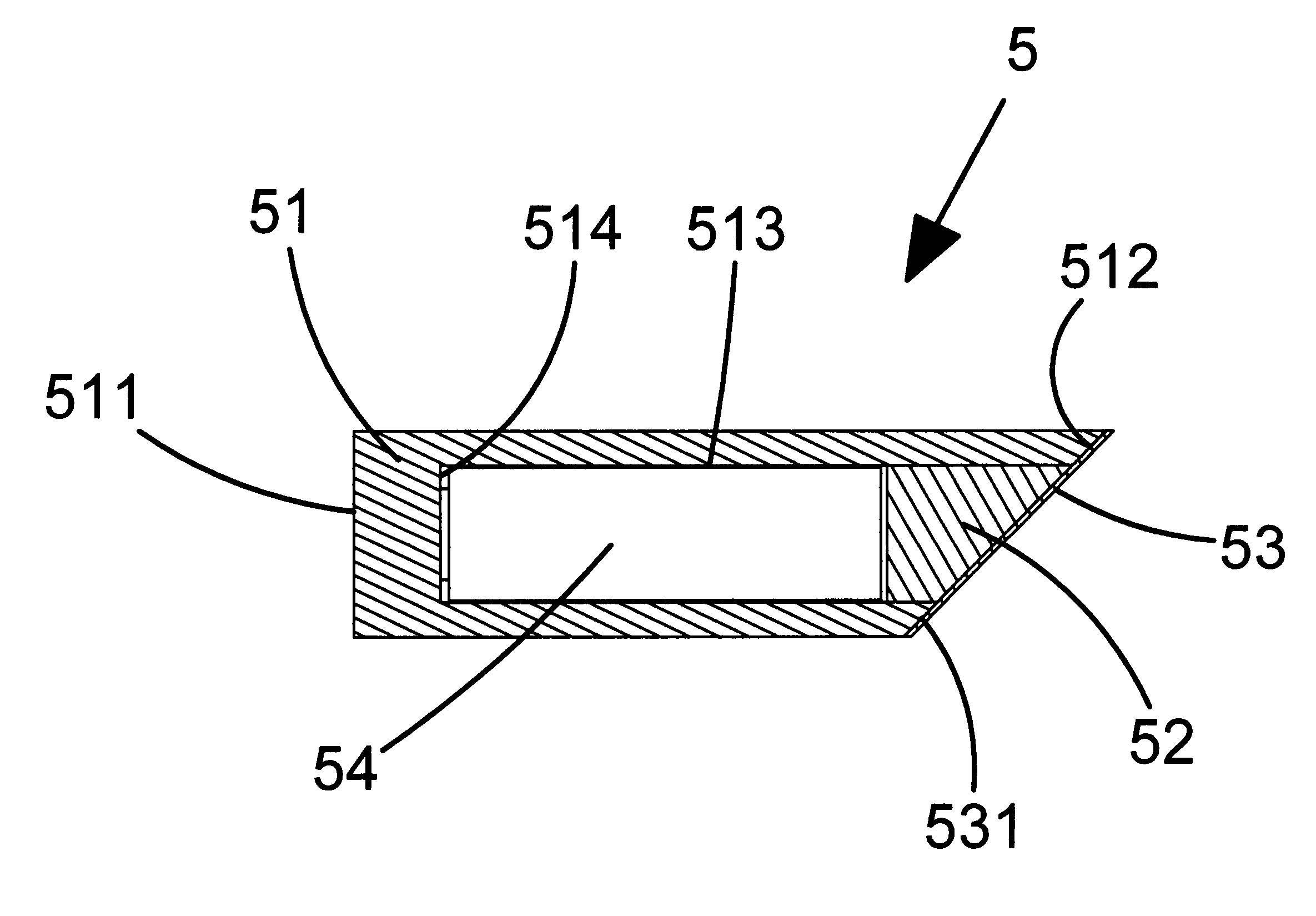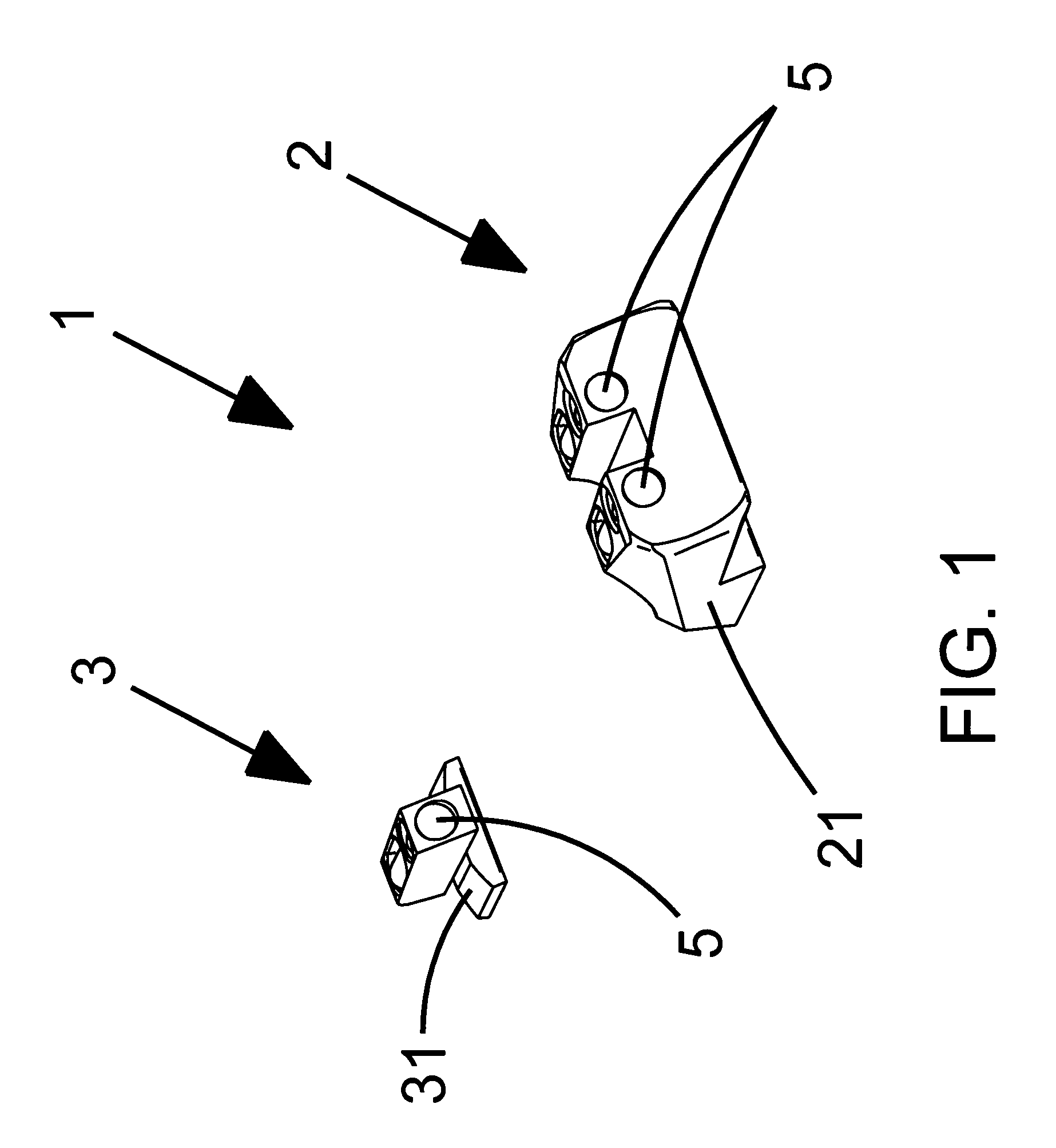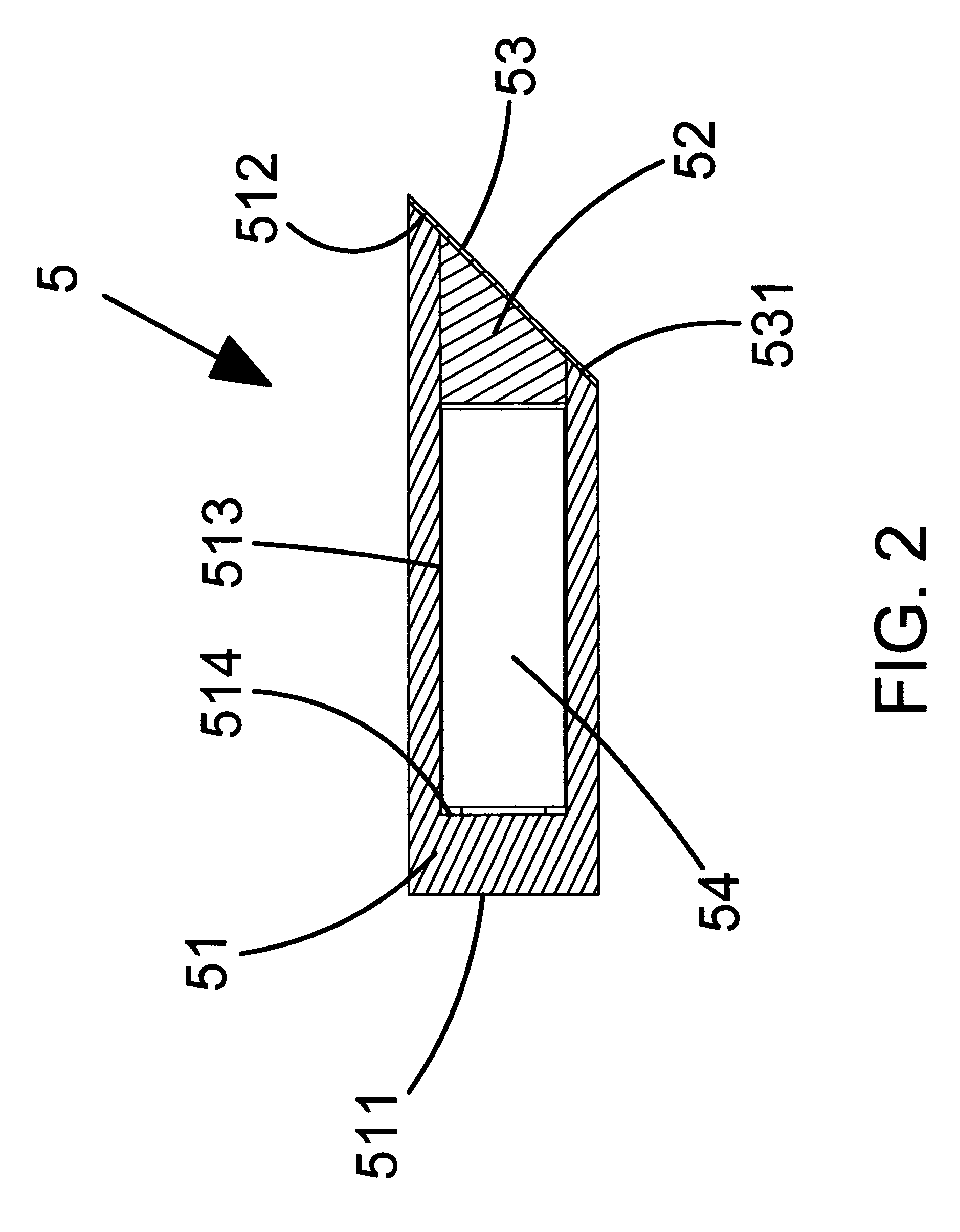Fiber optic sight for firearms with nighttime capabilities
a fiber optic sight and nighttime capability technology, applied in the field of fiber optic sight with nighttime capabilities, to achieve the effect of increasing the amount of light directed toward the shooter's eyes and sufficient illumination capabilities of the fiber optic sigh
- Summary
- Abstract
- Description
- Claims
- Application Information
AI Technical Summary
Benefits of technology
Problems solved by technology
Method used
Image
Examples
Embodiment Construction
[0025]Referring in detail to FIG. 1 of the drawings, the fiber optic sight set with nighttime sighting capability 1 consists of a fiber optic rear sight assembly with nighttime sighting capability 2 and a fiber optic front sight assembly with nighttime sighting capability 3. The fiber optic rear sight assembly with nighttime sighting capability 2 contains sight base 21 and two fiber optic rod assemblies 5. The fiber optic front sight assembly with nighttime sighting capability 3 contains front sight base 31 and one fiber optic rod assembly. All three of the fiber optic rod assemblies 5 are bonded to rear sight base 21 and front sight base 31 using an optically clear adhesive (not shown).
[0026]Referring in detail to FIG. 2 of the drawings, the fiber optic rod assembly 5 has a fiber optic rod 51, a front plug 52, a reflector 53 and tritium insert 54 all of which are bonded into a single unit utilizing an optically clear adhesive (not shown). Fiber optic rod 51 has a rear face 511, a s...
PUM
 Login to View More
Login to View More Abstract
Description
Claims
Application Information
 Login to View More
Login to View More - R&D
- Intellectual Property
- Life Sciences
- Materials
- Tech Scout
- Unparalleled Data Quality
- Higher Quality Content
- 60% Fewer Hallucinations
Browse by: Latest US Patents, China's latest patents, Technical Efficacy Thesaurus, Application Domain, Technology Topic, Popular Technical Reports.
© 2025 PatSnap. All rights reserved.Legal|Privacy policy|Modern Slavery Act Transparency Statement|Sitemap|About US| Contact US: help@patsnap.com



